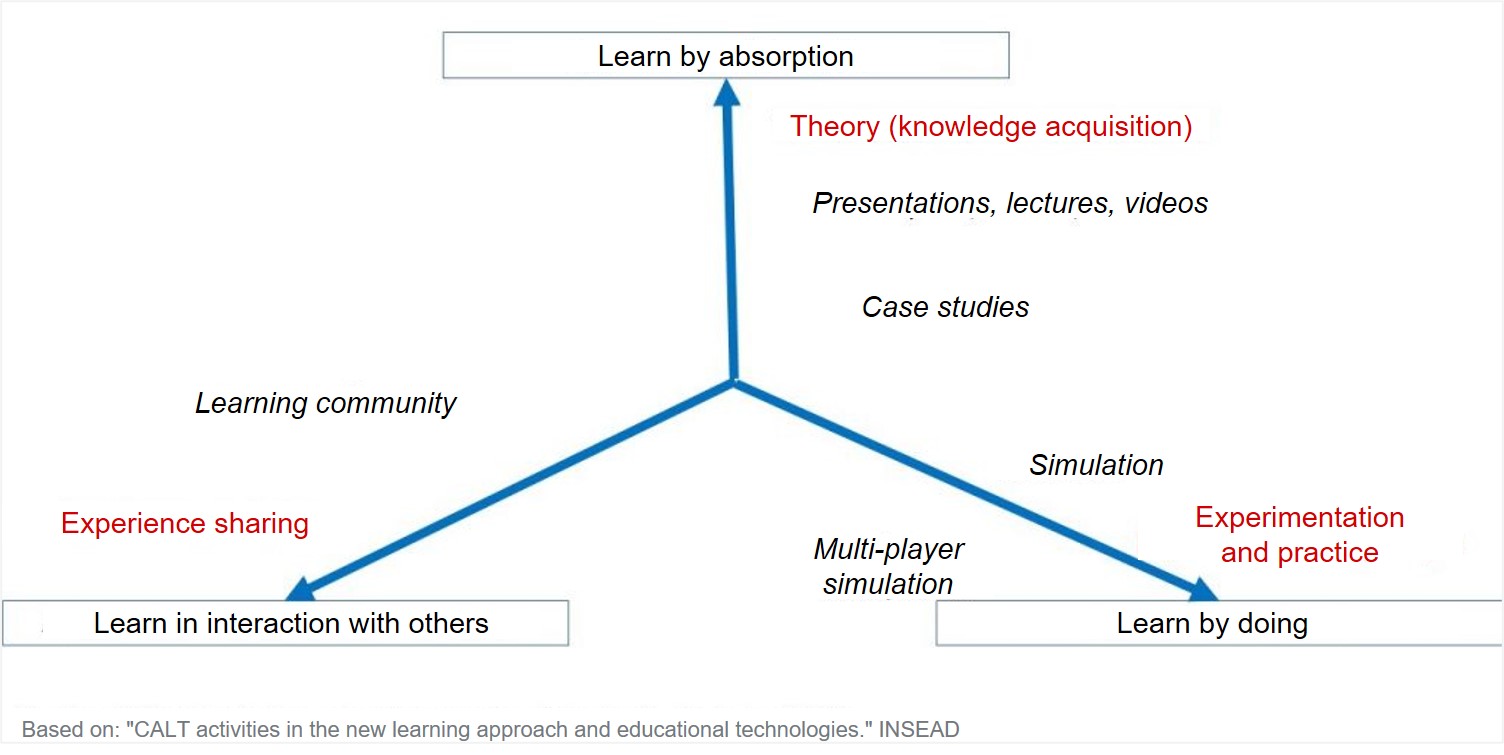Digital learning: 3 lessons we learnt from 2020
"We did it"! From training centres to corporate universities, from project managers to trainers, many of us noticed how considerably 2020 speeded up the digital transformation of training, i.e. the switch to distance learning. In actual fact, everything changed at once: our course designs, our working tools, and our approaches and teaching practices. So what will we take away from this crazy time?

Lesson no. 1: Think course rather than tool
Teams, Adobe Connect, Zoom, Webex, etc.: Some of us had barely heard of these tools just a year ago, and now they are part and parcel of our daily schedules! 2020 clearly confirmed the idea we already had that no tool, however sophisticated or intuitive, is a learning solution in itself.
The general view in terms of designing blended courses combining distance and classroom learning was previously to use:
- e-learning modules and videos for knowledge acquisition,
- classroom learning and/or hands-on projects for experimentation and practice, and
- classroom learning for interaction with others, or the learning community, generally initiated face-to-face.
In 2020, with the switch to all distance learning, that vision went completely out the window. Twenty years ago, the team at the Centre for Advanced Learning Technologies (CALT – INSEAD research centre) positioned virtual classrooms between "absorption of content" and "learning with others". In fact, in 2020, we created interaction and experience-sharing via small groups in virtual classrooms. But we also included simulations, case studies, research and data pooling, problem-solving and creativeness sessions...
2020 confirmed our belief that the 'synchronous/asynchronous' issue is more important than the question of face-to-face vs. distance learning. As Jean-Roch Houllier underlines in Les classes virtuelles brillent de tous leurs feux… jusqu’à quand ? (ELEARNINGLETTER, 24/12/ 2020), "all doubts about the possibility of keeping the time structure of face-to-face learning in a virtual classroom" were dispelled by "the results… that were rather good!".
"Today, we can not only say that there is no instruction without digital, but also that there is no digital without instruction", wrote Philippe Carré (Pourquoi et comment les adultes apprennent, Dunod, 2020).
The quality of our courses stems from the fact that learners were offered situations suited not only to the purpose of the learning, but also to their own project. No situation (whether face-to-face or distance), no tool, is the be-all and end-all.
In the definition given by Marcel Lebrun (2011), and taken up by Philippe Carré in his recent work mentioned above, "A training course is a coherent whole, consisting of resources, strategies, methods and people interacting in a given context to achieve an aim. The purpose of the pedagogical approach is (…) to enable someone to learn something".
Let's assume that an effective training course integrates the three learning modes identified by CALT:

Quite simply, 2020 taught us to get the best out of the virtual classroom, and better integrate it into our courses.
Lesson no. 2: Yes, we did miss classroom learning
During the period that followed the first lockdown, I was able to teach face-to-face. How great it was to see the learners in the flesh! To get together, even with our face masks, and chatter and joke at the break …
In Organismes de formation, s’adapter ne suffit plus (ELEARNINGLETTER, 4/12/2020), Denis Cristol expresses concern about losing the benefits of the group in a virtual classroom: "group support is completely undermined; the collective no longer is one; its very essence made up of bodies, breathing, the palpable flowing energy, the proxemics, movements and exchanged glances…".
There is indeed a loss of quality in communication, because we know the importance of non-verbal and para-verbal communication. And yes, the emphasis is largely shifted to cognitive interaction. Yet, in 1992, Jacques Leplat (cited by Philippe Carré, op. cit.) noted "that there is more to learning than cognitive aspects; there are emotions, attitude and motivation".
So, no one believes that all-distance learning will become the norm. As my former colleague and friend Laurent Reich says in his post 10 predictions for learning in 2021, we need to rethink why we need to be together to learn.
I saw how groups that had started learning face-to-face and continued remotely after the lockdown maintained their ability to help each other out, and I witnessed some great peer coaching in the virtual classroom! I also saw a group get off to a great start in distance learning, and spontaneously create virtual ways of sharing resources.
We must be attentive and provide learning situations and tools that foster relationships, cooperation and mutual help.
If 2020 reminded us that we are social beings, born to learn with others, then so much the better.
Lesson no. 3- The watchword: Support
Support learners
Tutoring, whether remotely or otherwise, and managing a community of learners, will become essential components of training. Training organisations and their customers must therefore review the training cost model which will now need to integrate and remunerate time spent outside synchronous group teaching.
Support trainers
Once the rush to train in tools has passed, the entire chain of learning professions will need repositioning and will have to question its practices.
We therefore have some great challenges ahead for 2021!








